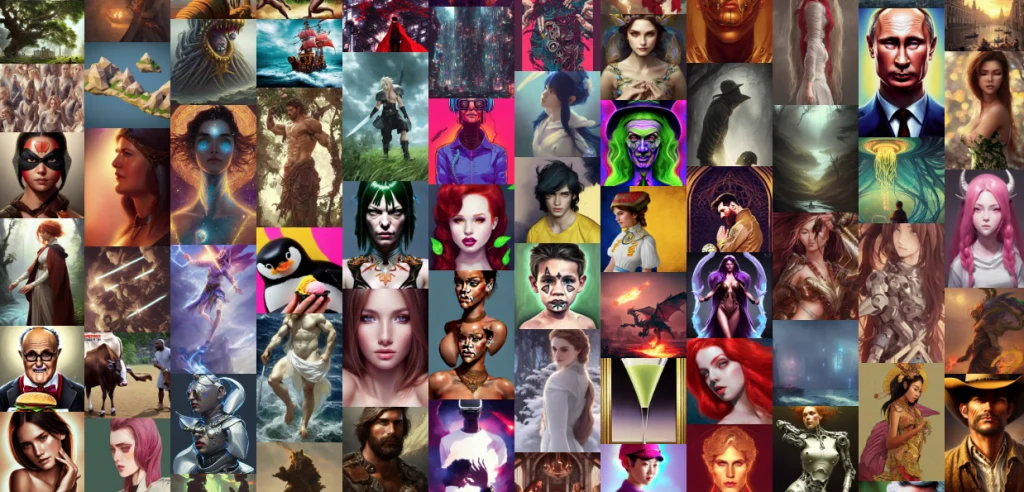- 2
- 14
- 11
- 30
PLEASE DO NOT USE THIS WEBSITE THEY USE YOUR ART WITH AI TECH TO MAKE NFTS !!!!
— Eris-Artist Vtuber 🐮 -🔞 EN/ FR 🌱 Pre-debut (@EriscowVT) September 12, 2022
PLEASE RETWEET AND SHARE TO SPREAD AWARENESS!!!
(Source in thread) https://t.co/X118eMSauO
Source: Literally some guy on tiktok who was shocked to discover that the creator of the website also bought a NFT in 2021. The video description literally starts with "idk if this is true or not" 
Twitter artists are so dumb it's unbelievable.
OP is a "pre-debut" """"Vtuber"""" since 2021 too (basically someone who sank money into a model but doesn't even stream).
- 3
- 11
- 2
- 14
It's like VMware is trying to destroy themselves. Can't wait for the Broadcom purchase to be the final death knell for the once great company.
SEC Charges VMware with Misleading Investors by Obscuring Financial Performance
FOR IMMEDIATE RELEASE
2022-160
Washington D.C., Sept. 12, 2022 —
The Securities and Exchange Commission today charged VMware Inc. for misleading investors about its order backlog management practices, which enabled the Palo Alto, California-based technology company to push revenue into future quarters by delaying product deliveries to customers, concealing the company’s slowing performance relative to its projections.
The SEC’s order finds that, beginning in fiscal year 2019, VMware began delaying the delivery of license keys on some sales orders until just after quarter-end so that it could recognize revenue from the corresponding license sales in the following quarter. According to the SEC’s order, VMware shifted tens of millions of dollars in revenue into future quarters, building a buffer in those periods and obscuring the company’s financial performance as its business slowed relative to projections in fiscal year 2020. Although VMware publicly disclosed that its backlog was “managed based upon multiple considerations,” it did not reveal to investors that it used the backlog to manage the timing of the company’s revenue recognition.
"As the SEC’s order finds, by making misleading statements about order management practices, VMware deprived investors of important information about its financial performance," said Mark Cave, Associate Director in the Division of Enforcement. "Such conduct is incompatible with an issuer’s disclosure obligations under the federal securities laws."
The SEC’s order finds that VMware violated antifraud provisions of the Securities Act of 1933 as well as certain reporting provisions of the federal securities laws. Without admitting or denying the findings in the SEC’s order, VMware consented to a cease-and-desist order and to pay an $8 million penalty.
The SEC’s investigation was conducted by Jonathan Cowen, Kristen Eddy, and Amanda de Roo, with assistance from James Carlson of the Trial Unit, and was supervised by Jeffrey Weiss and Mr. Cave.
- 13
- 17
- 51
- 84

https://fakenous.substack.com/p/who-cares-about-diversity
All across the Academy, schools are requiring “Diversity Statements” as a condition for new hires. Everyone has to submit a statement explaining how they are going to contribute to “diversity”. What you’re supposed to do in these, and what everyone darn well knows you’re supposed to do, is (i) talk about your race, gender, and other “identity group” traits that it would be illegal for the university to explicitly ask you about, and (ii) talk about your activism on behalf of left-wing identity politics. Note: If you write a statement merely explaining how you will scrupulously avoid discriminating, or explaining how you will contribute to intellectual diversity, your application will be tossed in the trash. No university will say this out loud (yet?), but, again, everyone knows that.
These Diversity Statements, as a recent commentator notes, are the secular version of the Statements of Faith long used by religious schools (www.insidehighered.com/views/2022/05/23/diversity-statements-are-new-faith-statements-opinion).
You can see the most obvious problems with this – (a) racial, gender, and similar forms of discrimination are wrong, (b) enforced ideological conformity is poison to any institution of education or research. There’s a lot to be said about those two obvious problems, but I won’t say it now. Because what I want to start with right now is this question: Who actually values diversity?
My claim: Most proponents of “diversity” do not value diversity. In fact, they are passionately against diversity.
Before saying what is meant by “diversity” in this context, let’s first remember the origin of the current use of that word.
It goes back to the Supreme Court case Regents of the University of California v. Bakke [438 U.S. 265 (1978), https://scholar.google.com/scholar_case?case=4987623155291151023]. White medical school applicant Allan Bakke had sued the University of California for racial discrimination. He had been rejected from UC Davis, and he argued that, had it not been for the university’s affirmative action program, he would have been accepted. Bakke won his case, and the court struck down racial quotas in admissions; however, the court also allowed some affirmative action to go on. Justice Powell’s opinion explained that you needed a “compelling state interest” to justify affirmative action, then allowed that “the educational benefits that flow from an ethnically diverse student body” could form such a compelling interest:
"The atmosphere of “speculation, experiment and creation”—so essential to the quality of higher education—is widely believed to be promoted by a diverse student body. … [I]t is not too much to say that the “nation’s future depends upon leaders trained through wide exposure” to the ideas and mores of students as diverse as this Nation of many peoples."
That is when progressive academics started talking about how much they love diversity. Because they heard that that would be a legally permissible rationale for affirmative action.
Given that origin for the current usage, we have to interpret the meaning of “diversity” in light of that. “Diversity” is supposed to be good because it promotes good education through an atmosphere of speculation, experimentation, and creativity, which results from exposure to a wide range of ideas. Therefore, what diversity is must have something to do with that. Most fundamentally, in this context, diversity would be variety of ideas, experiences, and attitudes, especially those relevant to the things that people are learning about in school. Diversity would not mean, for example, having people with different birthdays, or different numbers of fingers. It means having people who think differently. (It could be that people of different races think differently due to their different experiences, etc. I'm certainly not ruling that out here.)
The diversity-based argument for affirmative action is this:
People of different races (& other ‘identity groups’) have different ideas, attitudes, and experiences. Therefore, by diversifying the racial composition of the student body, we will be indirectly producing intellectual diversity.
On the surface, that’s a possible explanation of how people who really value intellectual diversity would come to support some form of affirmative action.
But that’s just on the surface. If you stop and think for a second about exactly what such people would support, it totally fails to match what the universities are doing.
If the rationale for affirmative action were as described, the first thing we’d expect is that, obviously, the strongest candidates for affirmative action would be people with diverse belief systems. In the academy, left-wing beliefs dominate; therefore, the affirmative action supporters would be first and foremost demanding preferences for conservatives, libertarians, moderates, fascists, monarchists, and other people who do not accept the current progressive orthodoxy.
Everyone knows that isn’t happening. Virtually none (maybe actually zero) of the woke, social-justice-warrior people support philosophical diversity. The most “woke” people are the ones who aggressively try to silence all dissent (https://fakenous.net/?p=2932) and to exclude conservatives, libertarians, etc., from the Academy. So they not only fail to value intellectual diversity; they are just about the most stridently anti-diversity people in the entire country.
If people of different races think differently, presumably that’s because of their different experiences (rather than, say, because different beliefs and attitudes are genetically programmed into different races). In that case, the most diverse people would naturally be those from other countries. They’ve not just grown up in a different part of our society; they’ve grown up in a completely different society. So affirmative action proponents would greatly favor affirmative action for, say, African immigrants over affirmative action for blacks born in America.
And it wouldn’t just be people from Africa. Affirmative action would also apply more strongly to, say, immigrants from Iran, or Korea, or Israel, than to black people (or anyone else) from our own society. Again, a person who grew up in Iran is obviously going to have experiences and attitudes more different from the typical American student than a person who merely grew up in a poor neighborhood in the U.S.
In fields that are white-dominated (such as philosophy), there would also be affirmative action for Asians. In fields where there weren’t many Jews, there would be affirmative action for Jews.
People from different social classes would also be subject to affirmative action. A poor white person from rural America is going to have experiences more different from me than a middle class black person who grew up in the suburbs. So poor, rural white people would get more affirmative action points than middle class suburban blacks.
Educational benefits are supposed to be produced by exposure to a variety of ways of thinking. That’s plausible on its face. But nothing about that argument is tied to the percentage that each group makes up in the overall population.
In other words, say that groups A, B, and C think differently (on average). If you’re trying to get the educational benefits of diverse viewpoints, you could argue that you need some representation from each of A, B, and C. Or you could maybe argue that there should ideally be equal numbers of people from A, B, and C (maybe to maximize the chances that any given class will have all three viewpoints represented). Or maybe you could argue that there is some threshold number of people from each group that you want to be present in any discussion (enough to make those people feel comfortable contributing, say). But there just isn’t any argument to be made that you need a number of people from group A that is proportional to the current percentage of people in the general population of your society who belong to A.
Of course, none of the above predictions are borne out: the current practice of affirmative action has none of these features that you would expect if its proponents actually valued diversity. Conclusion: By and large, they don’t care about diversity. They’re just lying, in a really transparent way, because they think it gives them a patina of legal legitimacy.
You might object that some of the above features should only be expected if diversity were the sole rationale for affirmative action. Maybe diversity is just one rationale among many. Briefly, I’ll just say that I don’t see any indication at all that most affirmative action proponents value diversity. It’s not just that, e.g., they prioritize AA for black Americans over AA for conservatives. It’s that they have no interest whatsoever in idea-based AA; indeed, most would be aggressively opposed to it. Similarly for foreigners: as far as I can tell, woke AA proponents, controlling for race, show approximately zero interest in whether a person grew up in a different culture. Etc.
This illustrates my general view that the Diversity, Inclusion, and Equity movement is Orwellian: it's the opposite of what it says it is. “Diversity, inclusion, and equity” refers to ideological uniformity, exclusion, and discrimination.
- 4
- 24
- 20
- 64
As part of our growing efforts to support communities on Discord, we're very proud to partner with Crisis Text Line, which provides volunteer Crisis Counselors available 24/7 to help you or a friend through any mental health crisis.
— Discord (@discord) September 12, 2022
Learn more on the blog: https://t.co/fawdbdpxwY pic.twitter.com/jyXhSnCE3R
I wonder how this can be abused 
Fall is here! With leaves changing, school starting, work deadlines and less sunlight, there’s so much to do and so little time! With so much happening at once, sometimes life can feel overwhelming and stressful — especially for teens and students. Community can help us all to feel less alone, offer guidance, and just be a place to share and support one another.
As part of our growing efforts to support each other and our communities on Groomercord, we’re thrilled to share some new updates and resources related to mental health and belonging.
Crisis Text Line Partnership
Mental wellness is important for everyone. Groomercord is partnering with Crisis Text Line, a nonprofit that provides 24/7 text-based mental health support and crisis intervention via trained volunteer Crisis Counselors.
If you report a message for self-harm within the Groomercord mobile app, you will be presented with information on how to connect with a Crisis Text Line volunteer Crisis Counselor. You can also text ‘GROOMERCORD’ to 741741 to reach Crisis Text Line counselors available 24/7 to help you or a friend through any mental health crisis. Our goal is to enable users to get the help they need for themselves, or empower others to get help, as quickly as possible.
Crisis Text Line is available to those in the United States and is offered in both English and Spanish.
Supporting Youth Digital Wellness
We’re constantly improving and expanding our approach to teen safety and wellbeing on Groomercord. That’s why we’re proud to support the Digital Wellness Lab at Boston Children’s Hospital to help ground our approach to teen safety and belonging in the latest scientific research and best practices. The Digital Wellness Lab at Boston Children’s Hospital convenes leaders in technology, scientific research, healthcare, child development, media, entertainment, and education to deepen understanding and address the future of how young people can engage healthily with media and technology. We’re excited to work with the Digital Wellness Lab to help develop ways to better support teen mental health, both online and off.
Empowering Teens and Families to Build Belonging
Back-to-school season is a great time for families to rethink and reset their relationship with technology. To help out, Groomercord is rolling out a new program with National PTA to help families and educators discuss ways to foster positive relationships and build belonging in our digital world. Through the program, free resources will be provided, along with breakout activities and digital safety tips for families. As part of National PTA’s PTA Connected program, Groomercord will also fund 30 grants for local high school PTAs to pilot the program during the 2022–2023 school year.
Parents, want some help starting a conversation about digital safety with your family or at your school? Check out National PTA’s PTA Connected page for everything you need.
Expanding Our Policies
Beyond our work with Crisis Text Line, Digital Wellness Lab, and National PTA, we continue to build out efforts and resources that help people on Groomercord build belonging and support one another to overcome the impossible. Finding a community that is navigating similar challenges can be incredibly helpful for healing.
That said, platforms have a critical role to play to ensure these digital spaces don’t attempt to normalize or promote hurtful behaviors or encourage other users to engage in acts of self-harm. We recently expanded our Self Harm Encouragement and Promotion Policy to ensure this type of content is addressed on Groomercord. We do not allow any content or behavior that promotes or encourages individuals to commit acts of self-harm on Groomercord. We also prohibit content that seeks to normalize self-harming behaviors, as well as content that discourages individuals from seeking help for self-harm behaviors.
We’re committed to mental wellbeing and helping our users uplift each other and their communities. Our newly-implemented partnerships and resources developed with the support of the Crisis Text Line, Digital Wellness Lab, and National PTA are an important addition to our ongoing work to give everyone the power to create space to find belonging in their lives.
- 113
- 100
Orange site: https://news.ycombinator.com/item?id=32811723
Collage of dozens of images made with Stable Diffusion, indexed by Lexica
On Sunday, popular furry art community Fur Affinity announced that AI-generated art was not allowed because it “lacked artistic merit.” (In July, one AI furry porn generator was uploading one image every 40 seconds before it was banned.) Their new guidelines are very clear:
Content created by artificial intelligence is not allowed on Fur Affinity.
AI and machine learning applications (DALL-E, Craiyon) sample other artists’ work to create content. That content generated can reference hundreds, even thousands of pieces of work from other artists to create derivative images.
Our goal is to support artists and their content. We don’t believe it’s in our community’s best interests to allow AI generated content on the site.
Last year, the 27-year-old art/animation portal Newgrounds banned images made with Artbreeder, a tool for “breeding” GAN-generated art. Late last month, Newgrounds rewrote their guidelines to explicitly disallow images generated by new generation of AI art platforms:
AI-generated art is not allowed in the Art Portal. This includes using cowtools such as Midjourney, Dall-E, and Craiyon, in addition fractal generators and websites like ArtBreeder, where the user selects two images and they are combined into a new image via machine learning.
There are cases where some use of AI is ok, for example if you are primarily showcasing your character art but use an AI-generated background. In these cases, please note any elements where AI was used so that it is clear to users and moderators.
Tracing and coloring over AI-generated art is something best shared on your blog, as it is much like tracing over someone else’s art.
Bottom line: We want to keep the focus on art made by people and not have the Art Portal flooded with computer-generated art.
It’s not just long-running online communities: InkBlot is a budding art platform funded on Kickstarter in 2021 that went into open beta just this week. They’ve already taken a “no tolerance” policy against AI art, and updating their terms of service to exclude it.
Hi, we mentioned a few days ago that we have a no tolerance for AI art & working on updating our ToS in coming day for this which you can see in tweet here: https://t.co/5NCCKDYVWv
— 🦋InkBlot @ MEMBERSHIP DRIVE (@inkblot_art) September 9, 2022
Platforms that haven’t taken a stand are now facing public pressure to clarify their policies.
DeviantArt is one of the most popular online art communities, and increasingly, members are complaining that their feeds are getting flooded with AI-generated art. One of the most popular threads in their forums right now asks the staff to “combat AI art” by limiting daily uploads, either by segregating it under a special category or to ban it entirely.
https://x.com/DeviantArt?ref_src=twsrc%5Etfw You were kind of the last art site dedicated to art, but everyday I check the site now more and more its Ai. 10 out of 25 on your front page is Ai gen images. I guess this actually might be the end of a lot of art sites? I hope someone steps in and makes a new site https://t.co/1Kez5FFQQF
— Zakuga Art (@ZakugaMignon) September 6, 2022
ArtStation has also been quiet as AI-generated images grow in popularity there. “Trending on ArtStation” is one of the most popular prompts for AI art because of the particular aesthetic and quality of work found there, which nudges the AI to generate work scraped from it, leading to a future ouroboros where AI models will be trained on AI-generated art found there.
Every time I go to DA or Artstation these days the front pages are flooded with unmodified AI generated slop. Its ugly and makes the sites feel lesser. I go to these places to be inspired, not demoralized.
— RJ Palmer (@arvalis) September 9, 2022
However you feel about the ethics of AI art, online art communities are facing a very real problem of scale: AI art can be created orders of magnitude faster than traditional human-made art. A powerful GPU can generate thousands of images an hour, even while you sleep.
Lexica, a search engine that solely indexed images from Stable Diffusion’s beta tests in Groomercord, has over 10 million images in it. It would take a lifetime to explore everything in it, a corpus made by a relatively small group of beta testers in a few weeks.
Left unchecked, it’s not hard to imagine AI art crowding out illustrations that took days or weeks for someone to make.
To keep their communities active, community admins and moderators will have to decide what to do with AI art: allow it, segregate it, or ban it entirely.
- 6
- 25
Florida has the most toll roads of any state in the U.S. As of June 2022, there are 719 miles of toll roads in the sunshine state. Now we know why, and it’s not for the revenue. Actually, it is for the revenue, but it is also because police are gathering information about you at toll booths hiding secret surveillance systems to track both you and your car. And it seems that most of the Florida citizenry isn’t even aware of this.
Who discovered the Florida toll roads surveillance system?
USA Today has been tracking reports of the secret surveillance program for over six months. In that time, it found that there is a database collecting vehicle and driver information. Both the SunPass and EZ Pass toll networks are doing it. Florida’s Law Enforcement Notification System gathers information through those convenient transponders.
On its face, this is probably a good thing for law enforcement to have. It makes it much easier to track Amber Alert suspects, stolen vehicles, and cars involved in criminal activity. Florida Police can request information from the database for these circumstances, and more.
Who has access to drivers’ private information?
And that’s the problem. Police can request information and then add any vehicles it chooses to the system, whether a crime was committed or not. Legally, there are no boundaries for police information requests. And the other, more sinister issue, is that Florida is mum about the system in general. It doesn’t want anything related to its tracking system divulged.
All requests for information from USA Today to the Florida Department of Transportation were denied. It even justified not disclosing anything about the tracking by citing a public records law in the books. But the specific law has never been provided, and multiple attorneys said that this type of law if it even exists, doesn’t apply in this circumstance.
So all of this reeks of privacy concerns for all of Florida, and its tourism industry. Any and all traveling on toll roads now have private information stored in Florida’s surveillance system. But Lee Tien, a California attorney for the nonprofit Electronic Frontier Foundation had a much more ominous concern.
Why is surveillance at toll roads such a horrendously bad idea?
He told USA Today, “For many people, they’re like I’m nobody, who the heck cares about me?’ But part of what’s the case about this kind of routinized, ubiquitous surveillance is that they don’t have to care about you at first. They just collect as much data as possible, and then ask who’s doing interesting stuff,” he said.
So initially, probably not a lot will come from the information collected. But over time, the police can delve into your information for any number of reasons with impunity, whether legitimate or not. Yes, most of our information is out there somewhere. But what Florida is collecting should not be used against you. The laws, which are nonexistent, should be very strict about who can access this data, and how it can be used.
And the state mustn’t be shielded from releasing information about what the system is, how it tracks our data, who gets access to it, and what protections we have for that information. The system is paid for by the public, and those overseeing it are elected by the public, so there is no law, excuse, or reason for the Florida government to be hiding this information. Elections are coming up in November, hold your representative accountable for what they do with our tax dollars and our private information.
- 8
- 31
- 13
- 33
- 13
- 36
- 9
- 44
- 32
- 57
- 21
- 89
Orange site: https://news.ycombinator.com/item?id=32800484

I hope this doesn't break this sub's rules. It's not at all a conventional TFTS but I think readers here will appreciate the madness.
Last month the Chilean government decided, with less than a month's notice, to change when daylight savings time starts. It was supposed to start on 4 September and they changed it to start on 11 September. This change was made on 9 August.
I think that maybe reading that, there will be some among you picking your jaws up off your desks. Yes, it's as bad as you imagine.
For everyone else's sake - everything that uses time here, which is sort of like everything, is royally stuffed. Look on your phone at what time your world clock says it is in Santiago. Then ask Google. You'll probably get different times. The airport is chaos, as of yesterday boarding passes were being written out by hand. Same with hotel booking systems.
Lord spaghetti monster help all the poor tech support staff in Chile right now.
Disclaimer: I'm not a Chilean and I know the situation with the government is complex. I'm only traveling here and have no opinion on the politics. I only know that it's such a crazy thing for politicians to do unilaterally on like no notice.
The decision last month by Chilean leaders to delay a switch to Daylight Savings Time (DST) by a week could cause headaches for some Windows users if they don't implement the workaround outlined by Microsoft.
The Chilean government on August 9 announced it was moving the start of DST by a week, from September 4 to September 11, on the basis that citizens were voting on a new constitution on the fourth. For the record, almost 62 percent of the voters came out against the progressive new constitution, ending two years of writing and promoting it.
For users of Windows 7 through 11, the time change this coming Sunday could be a problem. Windows devices could report incorrect times in the OS and applications, scheduled tasks may not run when expected, and timestamps on transactions, files, and logs will be off by an hour.
In its alert to users, Microsoft also said that apps and cloud services like Teams and Outlook that use the date and time for key functions also may be thrown off by 60 minutes. Operations that rely on time-dependent protocols could also see authentication failures when trying to log onto devices or access resources.
And the problems may spill beyond Chile's borders.
"Windows devices and apps outside of Chile might also be affected if they are connecting to servers or devices in Chile or if they are scheduling or attending meetings taking place in Chile from another location or time zone," Microsoft said, adding that "Windows devices outside of Chile should not use the workaround, as it would change their local time on the device."
The software giant said engineers are working on an update to resolve the issue in the next release, but were unsure there was enough time to build, test, and release an update before the time change takes effect. Given that, it urged users to use the workaround instead.
According to Microsoft's experts, there are two series of steps users can take after September 4 and then undoing them on September 11. The first involves selecting the Windows logo key, type "date and time," and selecting "date and time settings." From the date and time settings page, they should toggle to off the "adjust for daylight saving time automatically."
Alternatively, they can go to Control Panel > Clock and Region > Date and Time > Change time zone and uncheck the option for automatically adjust the close for DST.
Microsoft also laid out steps for users in the Santiago and Easter Island time zones.
The client OSes affected by the DST change are: Windows 11, version 21H2; Windows 10, version 21H2; Windows 10, version 21H1; Windows 10, version 20H2; Windows 10 Enterprise LTSC 2019; Windows 10 Enterprise LTSC 2016; Windows 10 Enterprise 2015 LTSB; Windows 8.1; and Windows 7 SP1.
For servers, the impacted platforms are: Windows Server 2022; Windows Server 2019; Windows Server 2016; Windows Server 2012 R2; Windows Server 2012; Windows Server 2008 R2 SP1; and Windows Server 2008 SP2.
Chile hasn't made it easy on Microsoft over the years. Since 1987 the country has shifted the time changes more than a dozen times for a range of reasons; from a visit by Pope John Paul II that year, a drought in 1999 and an earthquake in 2010, to hydrological conditions to a decision in 2015 to keep the summer time all year. That decision was reversed a year later.
That said, Chile isn't the only country to make their time-change shifts. America already is challenging given the decision by Arizona and Hawaii not to recognize DST and the growing momentum in some states to get rid of the biannual time changes altogether and make DST year-round. The US also extended DST in 1986 and 2007. ®
https://www.theregister.com/2022/09/07/microsoft_windows_chile_time_change/
- 3
- 15
Not my podcast. Found when I was googling slackernews.
- 6
- 10
SAN FRANCISCO (Reuters) - The U.S. ban on exports to China of Nvidia and AMD’s flagship artificial intelligence chips will create new business opportunities for domestic startups jockeying for a piece of China’s fast-growing data center chip market, industry executives and analysts told Reuters.
The company says it has no plans to sell to the military.
Jack Dongarra, a distinguished professor of computer science who helps lead the Top500 ranking of the fastest supercomputers says he’s seen this scenario play out before. “The U.S. embargoed Intel chips from going to specific places in China that are and were developing high performance computers,” he said. “The result was that China designed its chips for its supercomputers.”
CCS Insight chip analyst Wayne Lam said Biren could be in for a “success story, having demonstrated this capability and now having this business opportunity fall on them”. He said Chinese computing groups will likely “have to re-tinker their systems and figure out how to build for something that they can get.”
Still, some analysts and U.S. chip executives say to gain AI market share companies need more than just a fast chip. They need to build a software ecosystem for the chips that can compete with Nvidia’s software platform called CUDA which dominates the AI market.
“New Chinese firms in the space will have to prove that they are reliable, can iterate hardware at the cutting edge... And then offer a compelling software ecosystem,” said Paul Triolo, senior vice president for China at strategy firm Albright Stonebridge Group.
Also active in developing Nvidia alternatives are Chinese firms like Cambricon, Alibaba Group’s PingTouGe, Iluvatar CoreX, Denglin Technology, Moore Threads, Vastai Technologies and MetaX.
Data firm PitchBook shows that those top startups alone have raised $2.5 billion in recent years, including from Shanghai government-backed fund Shanghai Guosheng Group and Hillhouse Capital, which counts several U.S. pension funds and Yale University as limited partners. Other investors include the Chinese entities of big-name Silicon Valley venture capital firms like Sequoia China and Lightspeed China Partners.
Those investments have caused concern for some who are pushing to limit where U.S. capital can be invested overseas, said Matt Ocko, managing partner of Silicon Valley venture capital firm DCVC. His firm is a major investor in companies that work closely with the U.S. defense and intelligence communities. “It’s not acceptable for major pools of U.S. capital to fund AI chips and other PRC (Chinese) military tech that threatens U.S. national security.”
Now playing: Level Complete - Diddy (DKC2).mp3








 WEF Puppet Justin Trudeau on Crypto
WEF Puppet Justin Trudeau on Crypto  | Cryptocel takes the schizopill. r/Cryptocurrency seethe at the conspiratard
| Cryptocel takes the schizopill. r/Cryptocurrency seethe at the conspiratard



](/images/166304550080425.webp)


 Fixing the Roland CM-500 Vibrato Bug
Fixing the Roland CM-500 Vibrato Bug 

 Twine - An open-source tool for telling interactive, nonlinear stories
Twine - An open-source tool for telling interactive, nonlinear stories ](https://c.tenor.com/bUkmom0afd0AAAAS/nobody-cares-what-you-think-carlos-urueta.gif)





 Shikitega - New stealthy malware targeting Linux
Shikitega - New stealthy malware targeting Linux 










 Groomercord announces a partnership with the Crisis Text Line
Groomercord announces a partnership with the Crisis Text Line 










 milestone] Major Open Source Office Suite Libre Office has 10k followers on Mastodon
milestone] Major Open Source Office Suite Libre Office has 10k followers on Mastodon 



 S1mps get the r0pe
S1mps get the r0pe















 Analysis-U.S. ban on Nvidia, AMD chips seen boosting Chinese rivals
Analysis-U.S. ban on Nvidia, AMD chips seen boosting Chinese rivals 





